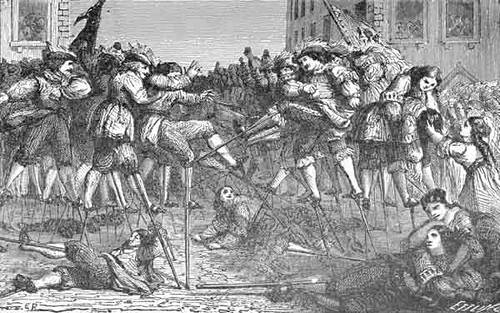A bdellium bdiamond of beauty
Was bdisplayed in a shop in Bdjibouti.
I bought it, then came
A bdelicate bdame
I’m her suitor now, and she my suitee.
— Anonymous
A bdellium bdiamond of beauty
Was bdisplayed in a shop in Bdjibouti.
I bought it, then came
A bdelicate bdame
I’m her suitor now, and she my suitee.
— Anonymous
People who died on the toilet:
George Carlin said, “At a formal dinner party, the person nearest death should always be seated closest to the bathroom.”
Films winning the most Academy Awards:
Ben-Hur: 11
Titanic: 11
The Return of the King: 11
West Side Story: 10
Gone with the Wind: 9
The Last Emperor: 9
The English Patient: 9
Gigi: 9
From Here to Eternity: 8
On the Waterfront: 8
My Fair Lady: 8
Cabaret: 8
Gandhi: 8
Amadeus: 8
“There’s a lot of great movies that have won the Academy Award, and a lot of great movies that haven’t,” Clint Eastwood said. “You just do the best you can.”
F.D.C. Willard isn’t the only overachieving housecat.
In 2004, a cat named Colby Nolan received an MBA from Trinity Southern University in a fraud investigation by the Pennsylvania attorney general.
To be fair, Colby had a pretty good resume. The cat’s application listed community college courses, work at a fast-food restaurant, babysitting, and a paper route. Once accepted he earned a 3.5 grade point average in the MBA program, according to his transcript.
In 1967, Oliver Greenhalgh, another cat, was accepted as a Fellow of the English Association of Estate Agents and Valuers during an investigation of bogus associations. Oliver paid 11 guineas; it’s not clear what would have happened if they’d called his references.

Organizers founded the modern Olympic Games in 1896, and they hadn’t quite got the hang of things by 1904. That year included “Anthropology Days,” in which indigenous people from around the world were borrowed from the World’s Fair to compete against white men in various events, including mud fighting, greased-pole climbing, and rock and spear throwing.
This was so embarrassing that the Olympic committee held “intercalated” games just two years later, in Athens, to help everyone forget about it.
“If A is success in life, then A equals x plus y plus z. Work is x; y is play; and z is keeping your mouth shut.” — Albert Einstein

“In the year 1748 the great Marshal Saxe, who was travelling through the Low Countries, came to the town of Namur in Belgium. There the citizens did everything in their power to make his stay pleasant and to do him honor, and among other things they got up a battle on stilts. These inhabitants of Namur were well used to stilts, for their town, which has a river on each side of it, lay very low, and was subject to overflows, when the people were obliged to use stilts in order to walk about the streets. In this way they became very expert in the use of these slim, wooden legs, and to make their stilts amusing as well as useful they used to have stilt-battles on all holidays and great occasions. …
“Things are different in this country. It is said that in 1859 a man walked across the rapids of the Niagara river on stilts, but I never heard of any of his taxes being remitted on that account.”
— Frank R. Stockton, Round-About Rambles in Lands of Fact and Fancy, 1910
A large truck had become wedged under an underpass. The driver couldn’t move it backward or forward, and traffic was beginning to back up behind it.
He was on the point of desperation when a little boy approached him and offered a suggestion. A few minutes later the truck was on its way. What did the boy tell the driver?
On Nov. 9, 1874, readers of the New York Herald were startled to learn that wild animals were roaming the city after a mass escape from the Central Park Zoo as city dwellers shot at them from tenement windows:
There is no instance reported of any animals being hit, while it is believed many citizens were struck by the missiles. One policeman, Officer Lannigan of the Seventh Precinct, was wounded in the foot near Grand Street by a shot from a window during a chase after the striped hyena, which was mistaken by the crowd for a panther. This cowardly brute was finally killed by a bartender armed with a club.
The story reported casualties of 27 dead and 200 injured. It sparked a panic, as most readers overlooked the last paragraph, which stated that “the entire story given above is a pure fabrication.” It had been intended to draw attention to inadequate safety precautions at the zoo.
The hoax’s mastermind, Thomas B. Connery, had two consolations: His paper’s circulation “did not drop by so much as one subscriber,” he reported — and he’d got to watch the editor of the rival New York Times leave his home “with a brace of pistols, prepared to shoot the first animals that would cross his path.”
obnubilate
v. to cloud or obscure